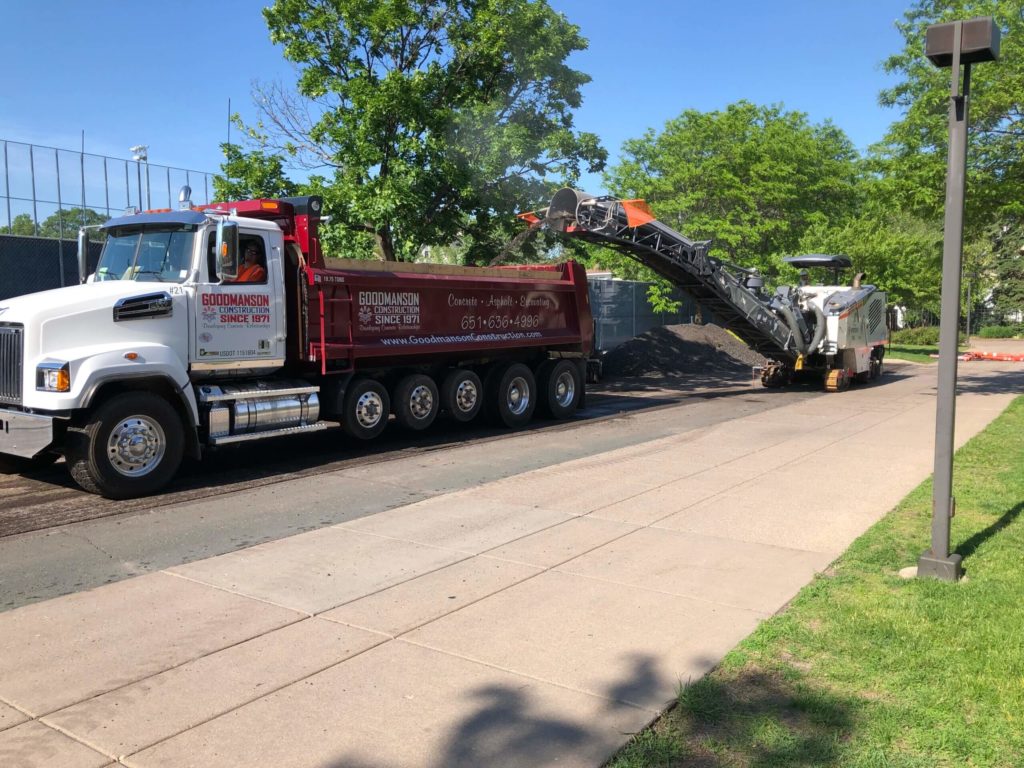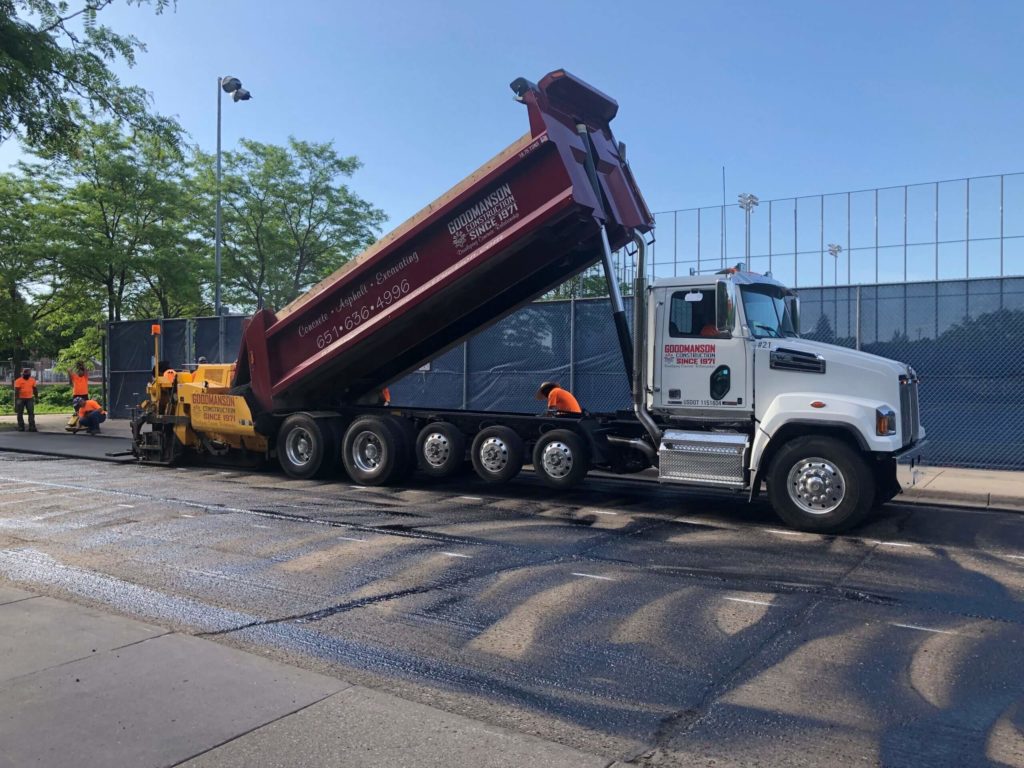
Asphalt Milling Procedure
The first part of the mill and overlay is the “mill” and that comes from specialized grinding equipment or a milling machine that chews up and grinds the existing asphalt surface into aggregate, which is then collected by dump trucks and reused as base for a new parking lot.
Asphalt Overlay Process
After the whole area is milled, you’re left with a rough looking surface that needs to get a new course of fresh asphalt. That’s when we bring in our asphalt paving equipment and start paving.
Typically, asphalt paving companies pave in a few different courses. The first course is called the base course, which consists of large pieces of aggregate and less actual asphalt (the binding agent) to promote greater strength and durability. The second course is called the wear course which is the course of asphalt you drive on. It’s the one that takes the “wear and tear” of daily use so that’s one way you can remember it. It’s typically made from finer particles of aggregate and more asphalt binding agent.
The “wear course” is very similar to what you might call “blacktop” as we discuss in another blog post.
Once that overlay of asphalt is done, we stripe it to ADA specific standards and you’re ready to go!
Can I Put Asphalt Over Asphalt?

We’ve answered the question as to whether you can put asphalt over concrete, but what about asphalt over asphalt? If it’s a failing surface, sure you could put it down, but it wouldn’t be strong enough to last. That’s why mill AND overlay is such an attractive option.
Asphalt Mill & Overlay: an Unbeatable Combination
With Mill and Overlay, the answer is yes. You just need to mill down a few inches of the existing asphalt and then you can pour right on top of the previous course of asphalt if it’s not in too bad of shape.
How Long Will an Asphalt Overlay Last?
A new asphalt surface can last anywhere from 8 to 15 years. But that’s all dependent on a few different factors. One of them is the environment. We have to keep in mind that climate and soil conditions remain a living part of every single outdoor project. If those shift or change, that can have an effect on the life cycle of your project.
Which brings us to an important decision point: when does it come time to change from just doing an overlay to doing a full parking lot replacement?
When SHOULDN’T I do a Mill and Overlay?
If you’re looking at a parking lot where there is a lot of sinking and other signs of the base of gravel or the underlying soil failing, then it might be time to look at a full ground up replacement.
That’s not great news to hear, but it’s the truth. And your estimator will be able to tell you what the best route to take is for your project. Estimators you can trust, like those from Goodmanson Construction, take your project goals into account.
We know most people don’t want to pay for something over and over again. You don’t want to do a mill and overlay and then just have to pay for another one a year or so down the road. Mill and overlay is great if the surface just needs a refresh. And it would be going overkill if you do the whole parking lot over again from the soil up.
But if that gravel base is failing, or if you don’t have a gravel base and your parking lot is just laid on top of a failing soil base, then you have to really consider getting it all done over again. When we say “failing” we mean that the pressures and forces acting on the base has caused something to shift, move, or collapse. Thus the top layer of asphalt will sink down into the void, or begin to collapse around the edges.
Get an Estimator!
Get an estimator with experience! Goodmanson Construction has a team of estimators who will listen to your goals and give you the best project that meets those goals. Nothing more, nothing less.

